Hispanic Heritage Month Resources to Immerse Yourself in Latinx Culture
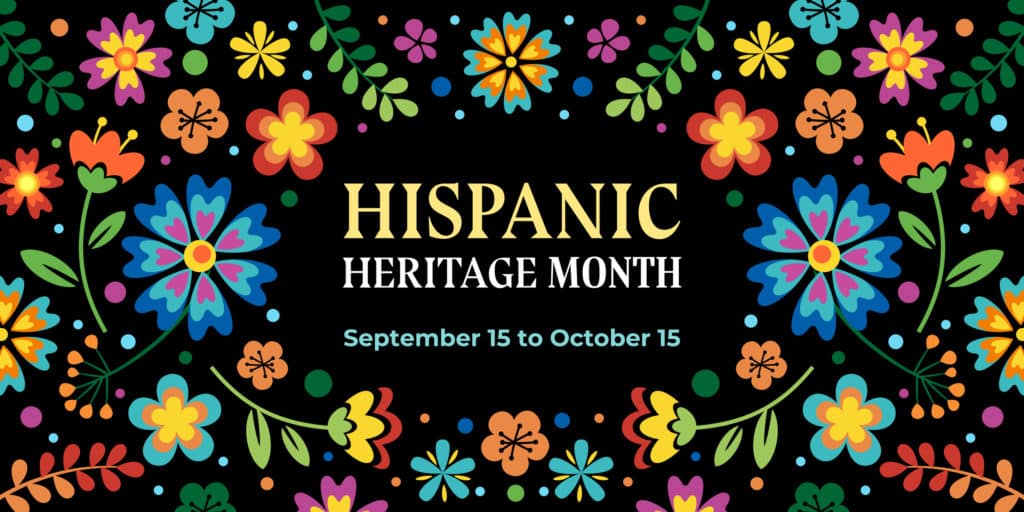
Hispanic Heritage Month kicked off last week. We celebrated by posting the first video in a month-long series that celebrates Hispanic voices in the association industry. Association Forum’s Latinx Advisory Group has come up with myriad resources to help you celebrate for the coming month and beyond. They even made you a Spotify playlist! Read on for local events, good books, and more!
Events Around Town
Whether you live in the city or the suburbs, there’s plenty happening for Hispanic Heritage Month in the Chicagoland area. According to to the last census, Chicago has more than 800,000 Latinx residents. That’s nearly 30% of the city’s overall population. Whether you’re part of the Latinx community or an ally, there are rich cultures to explore, traditions to delight in, and delicious food to eat during this month.
Choose Chicago put together a comprehensive piece on “How to Celebrate Hispanic Heritage Month in Chicago.”
Here are more events identified by the Latinx Advisory Group:
|
9/23/2022 |
All Month! |
|
9/24/2022 |
10/09/2022 |
|
9/25/2022 |
10/14/2022 |
|
9/30/2022 |
10/20/2022 |
|
10/1-2/2022 |
10/21/2022 |
|
10/02/2022 |
Recommended Books
What better way to steep yourself in a culture than to read an immersive piece of fiction? The Latinx Advisory Group has put together a list of literary works that will help you peak into various hispanic cultures.
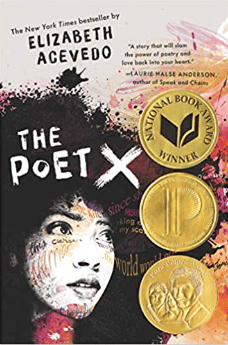 |
“The Poet X” by Elizabeth Acevedo The Poet X is a powerful coming-of-age story about an African American-Latina teenage girl struggling with her body, her faith, and her relationship with her mother. Written in free verse, the novel tells of the story of Xiomara Batista. As her body has developed, she receives negative attention and sexual harassment from the boys and men around her. Years of this behavior has hardened Xiomara’s exterior as she’s built up a wall protect herself and her vulnerability. The only people Xiomara feels close to are her best friend and her twin brother who’s unlike her in so many ways but is also going through his own coming-of-age crisis. |
 |
“Wild Tongues Can’t be Tamed” Edited By Saraciea J. Fennell In Wild Tongues Can’t Be Tamed, writers from across the Latinx diaspora interrogate the different myths and stereotypes about this rich and diverse community. From immigration to sexuality, music to language, and more, these personal essays and poems are essential additions to the cultural conversation, sure to inspire hope and spark dialogue. |
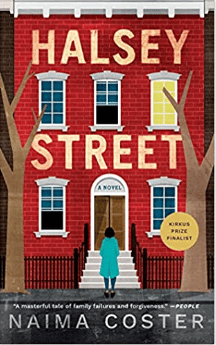 |
“Halsey Street” By Naima Coster Don’t let the bright cover fool you, Halsey Street is a gut-punch of a debut novel from Dominican-American writer Naima Coster. In a vivid, realist style, Halsey Street blends African American and Latin American narratives of gentrification and immigration. The story carefully examines complicated family relationships, love, art, and healing. |
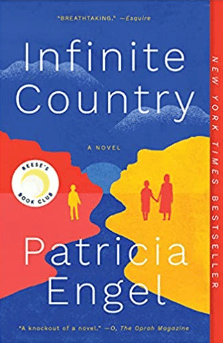 |
“Infinite Country” by Patricia Engel “Infinite Country” is the story of two countries, the United States and Columbia, and one mixed-status family who is in pursuit of a better life. Each member of this five-person family has a voice in the story, from Talia, who is in a race against time to make her flight to America, to her immigrant parents, who face many hardships, including the deportation of her father. Through this book, award-winning author Patricia Engel, who is a dual citizen and the daughter of Colombian immigrants, draws readers into the tense reality of life as an undocumented individual in America. |
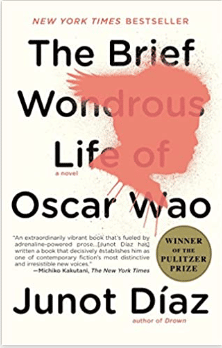 |
“The Brief Wondrous Life of Oscar Wao” by Junot Díaz Junot Díaz’s Pulitzer Prize winning novel isn’t just about Oscar Wao, a Dominican-American living in New Jersey with a passion for science fiction and fantasy books. Nor is it just about finding love, as exciting as it may be. At its heart, The Brief Wondrous Life of Oscar Wao is also about a long family history of living with the fukú — an intergenerational curse of unhappiness — and of persevering for a better tomorrow. Rich in symbolism and masterful in its use of voices and languages to show the duality of mixed cultures, it’s no surprise that this is often considered one of the best books of all time. |
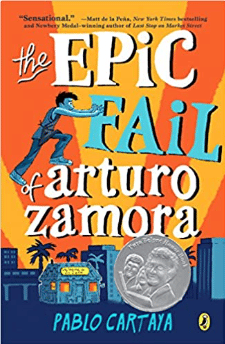 |
“The Epic Fail of Arturo Zamora” by Pablo Cartaya Warm and funny, The Epic Fail of Arturo Zamora is the touching story of a Cuban American boy and his mission to save his family’s beloved Miami restaurant. Arturo’s story is an inspiring tale of family and community that young readers won’t want to miss. |
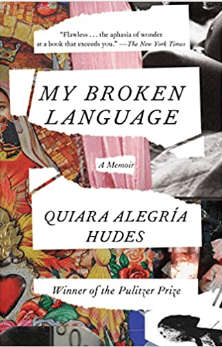 |
“My Broken Language” by Quiara Alegría Hudes It’s safe to say that most things that come out of West Philadelphia are worthy of praise and that doesn’t stop with Quiara Alegriìa Hudes! The Pulitzer Prize–winning playwright and co-writer of Tony Award-nominated In the Heights, tells her lyrical story of coming of age in a Philadelphia barrio and her journey through language in her Puerto Rican family. |
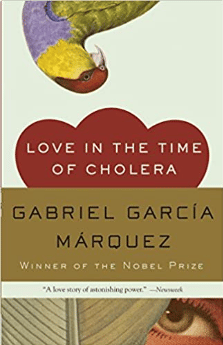 |
“Love in the Time of Cholera” by Gabriel Garcia Marquez In their youth, Florentino Ariza and Fermina Daza fall passionately in love. When Fermina eventually chooses to marry a wealthy, well-born doctor, Florentino is devastated, but he is a romantic. As he rises in his business career he whiles away the years in 622 affairs–yet he reserves his heart for Fermina. Her husband dies at last, and Florentino purposefully attends the funeral. Fifty years, nine months, and four days after he first declared his love for Fermina, he will do so again. |
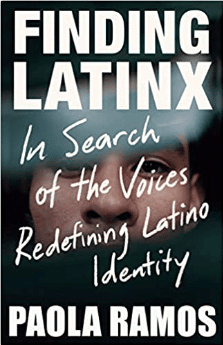 |
“Finding Latinx: In Search of the Voices Redefining Latino Identity” by Paola Ramos In this empowering cross-country travelogue, journalist and activist Paola Ramos embarks on a journey to find the communities of people defining the controversial term, “Latinx.” She introduces us to the indigenous Oaxacans who rebuilt the main street in a post-industrial town in upstate New York, the “Las Poderosas” who fight for reproductive rights in Texas, the musicians in Milwaukee whose beats reassure others of their belonging, as well as drag queens, environmental activists, farmworkers, and the migrants detained at our border. Drawing on intensive field research as well as her own personal story, Ramos chronicles how “Latinx” has given rise to a sense of collectivity and solidarity among Latinos unseen in this country for decades. |
Additional Reading
Below are articles and reports for more reading on Latinx issues.
2021 LDC Perception About Latinos in America
Facts about the current economic state of Latinos, specifically US born, in the US.
Perceptions of Americans on Latinos and where there are discrepancies between facts and perception
Comparison between last study completed in 2012 and results of 2021 study – view of how perception of Latinos has changed
Understanding of Latinos in the U.S. and their experience with wealth creation in the areas of:
- Homeownership
- Entrepreneurship
- Savings and Investment
Inclusion, Information, and Intersection: The Truth About Connecting with U.S. Latinos
- Latino buying power is projected to be $2.6 trillion in just about three years representing nearly a 150% increase in the last decade.
- Aside from being the largest racial or ethnic group in the U.S., Latinos are a diverse, intersectional group with different experiences, perspectives and expectations.
Latino-Owned Businesses May Be the U.S. Economy’s Best Bet
- Latino entrepreneurs are starting small businesses faster than the rest of the startup population and becoming a bigger part of the total U.S. market every day.
- When Latino entrepreneurs start a business, 70 percent of their funding comes from personal savings, while just six percent comes from commercial loans.
McKinsey Report Brings Focus To The Business Opportunity Of The Hispanic Segment
“The economic state of Latinos in America. The American dream deferred”- McKinsey report focuses on four key areas associated with the Hispanic segment’s economic activity:
- Hispanics as workers,
- business owners,
- consumers, and
- business investors.
Hispanic individuals accounted for only 4 percent of large U.S. companies’ most senior executives in 2021, according to a survey by HACR (Hispanic Association on Corporate Responsibility). That’s flat with the 5 percent reported in 2020 and 2019. It’s increasingly difficult for Hispanics to break through to the highest levels of executive leadership
About 6 million U.S. adults identify as Afro-Latino
Insights on the Afro-Latino community.
Guide on how to respect ethnic names, including do’s and don’ts to follow when addressing individuals with an ethnic name.
10 Latin American Indigenous Rights and Environmental Activists You Should Know
The Indigenous communities and lands of Latin America have long faced threats to their existence. As local governments continue to auction off these fruitful, ancestral lands in exchange for profit and power, they are contributing to the destruction of local environments and communities. Over the years, Indigenous and environmental defenders have risen against them to defend their people and protect the lands. Many of them are women who, as they go up against powerful government forces and businesses, also face sexism and violence while fighting for justice.
AMERICAN MASTERS: Lights, Camera, Acción
Discover the candid perspectives of Latine actors, writers, producers, directors, and showrunners across generations as they dissect the ever-evolving issue of Latine representation in Hollywood. Featuring Edward James Olmos, John Leguizamo, Xolo Maridueña (“Cobra Kai”), and Julissa Calderon (“Gentefied”), Peter Murrieta (“Mr. Iglesias”), Marvin Lemus (“Gentefied”) and more.
The 10 Most Important Events in the History of Latin America
Latin America has been always shaped by events as much as by people and leaders. In the long and turbulent history of the region, there were wars, assassinations, conquests, rebellions, crackdowns and massacres. Which was the most important? These 10 were selected based on international importance and effect on the population. It is impossible to rank them on importance, so they are listed in chronological order.
Portage Park Exhibit Highlights Latino Artists For National Hispanic Heritage Month
A Northwest Side gallery has a new look to accompany its latest exhibit, which highlights Latino and Hispanic artists from around Chicago.
Tags
Related Articles
Honoring Black History Month: What to Read, Watch, and Do in Chicago This February
Discover meaningful ways to celebrate Black History Month in Chicago through books, films, and local...
Welcoming Environment® Roundup
Links to every WE article we published in 2024.
Taking DEI from Planning to Action
Associations must move beyond conversation to actionable diversity, equity, and inclusion (DEI) initiatives. Read on...




